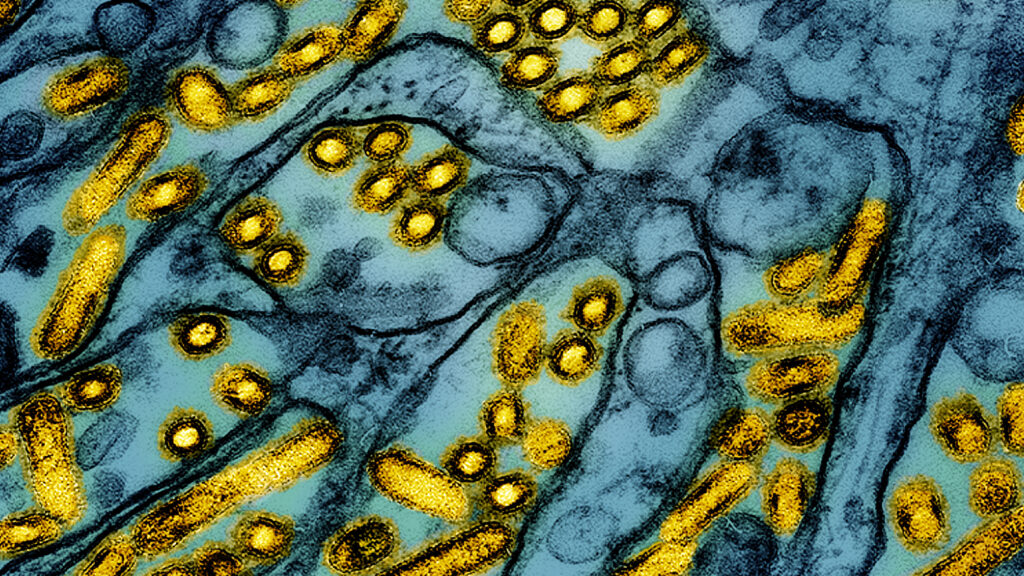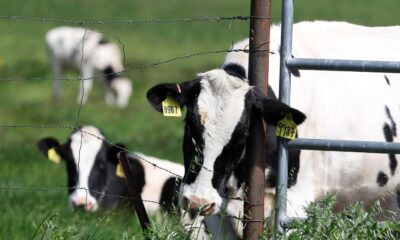Health
US expands capacity to test people for H5N1 bird flu

aAs the H5N1 bird flu outbreak in dairy cows enters its fourth month, the Centers for Disease Control and Prevention is taking steps to increase the nation’s capacity to test people for the virus.
In a call with reporters Tuesday, Nirav Shah, the CDC’s principal deputy director, emphasized that the risk to the general public remains low at this time. But as the virus shows no signs of slowing its advance into the U.S. cattle population — threatening to create lasting risks for dairy workers and giving it more opportunities to evolve in ways that make it better at spreading to and among humans – the agency wants to increase the number and types of tests that can effectively detect H5N1 infections in humans.
“We must remain prepared for the possibility of an expansion of the H5N1 outbreak in humans,” Shah said.
Currently, the CDC’s bird flu test is the only test that the Food and Drug Administration has approved for use. Shah said the agency has distributed 750,000 of these tests to local public health labs, and expects another 1.2 million to come online in the next two to three months.
But if the virus were to spread easily among people, testing needs could quickly exceed the existing capacity of public health laboratories. That’s why the CDC is also working with commercial labs to build additional tests. So far, the agency has licensed eight companies for its tests, Shah said. Three additional licenses are pending and another four companies are in the process of applying for licenses.
The effort appears aimed at avoiding mistakes the federal government made in the early months of the Covid-19 pandemic, when testing failures — including a slow recruitment of commercial labs for the response — allowed the coronavirus to spread spread unnoticed.
The CDC and local health departments have been trying to boost bird flu testing among farm workers – also with financial incentives – but the uptake was slow. Since the outbreak was recognized in March, the US has tested just 53 people for new flu strains, including H5N1, according to the latest figures from the CDC. Three people — a farm worker in Texas and two in Michigan — tested positive for the virus. Two had only mild symptoms, namely conjunctivitis or pink eye. The third had more traditional flu-like respiratory symptoms and all three recovered.
Many dairy workers are immigrants, living in rural areas with little access to transportation and no sick leave, making it difficult to travel to health care providers for testing and treatment. While acknowledging these challenges, public health experts have criticized the lack of testing, making it difficult to know how many farmworkers have been infected. Inadequate surveillance could also cause public health authorities to miss signs of human-to-human spread of the H5N1 virus.
The labs that have received CDC licenses will still have to get their versions of the CDC test approved for use by the FDA before they can be rolled out. Part of that approval process is proving that the tests work. And to conduct such validation studies, laboratories and diagnostic equipment manufacturers need control materials: samples that contain enough virus for a test to be labeled positive. That becomes more complicated with a flu virus like H5N1, which is highly pathogenic and therefore requires additional biosafety controls to work with in a laboratory.
To streamline the test validation process, the CDC is working to develop a non-virulent form of the control material, which it plans to provide to diagnostic manufacturers and commercial testing labs, although Shah did not provide a timeline for when these would become available.
The agency is also urging the diagnostics industry to develop additional types of H5N1 tests to expand the nation’s portfolio of viral detection capabilities. On June 10, CDC place a call for innovative testing solutions that can easily be expanded to process at least one million samples by the end of this year. The agency is now reviewing these applications, Shah said, with the goal of awarding funding to the winning companies by the end of August.
On Tuesday, the federal government also announced plans to support the development of messenger RNA-based pandemic flu vaccines, including vaccines against the H5 and H7 avian flu viruses. BARDA, the Biomedical Advanced Research Development Authority, has awarded Moderna $176 million to accelerate clinical testing of its pandemic vaccines, which are expected to enter Phase 3 testing sometime next year. The U.S. government already has vaccine contracts and supplies of H5 vaccines made using other platforms from other manufacturers, including CSL Seqirus and Sanofi.
Dawn O’Connell, assistant secretary for preparedness and response at the Department of Health and Human Services, said at the news conference that there are now nearly 5 million doses of bulk H5 vaccine stockpiled in the national pre-pandemic flu vaccine stockpile. to be put into vials, in case needed. “Our expectation is that the first doses will come off the market by the middle of this month,” O’Connell said. “We remain extremely vigilant about the situation we are all monitoring regarding dairy cows and are working very closely with our other public health partners to understand if and when we should take these vaccines off the production line and into use.”
As of Tuesday, the Department of Agriculture has reported infections in 137 dairy herds in 12 states. That number does not include four additional infected herds reported by state authorities this week, including one each in Iowa and Minnesota and two in Colorado. With 27 outbreaks in Colorado — most of which occurred in the past month — that state has now seen almost a quarter of the dairy herd infected with the virus.













